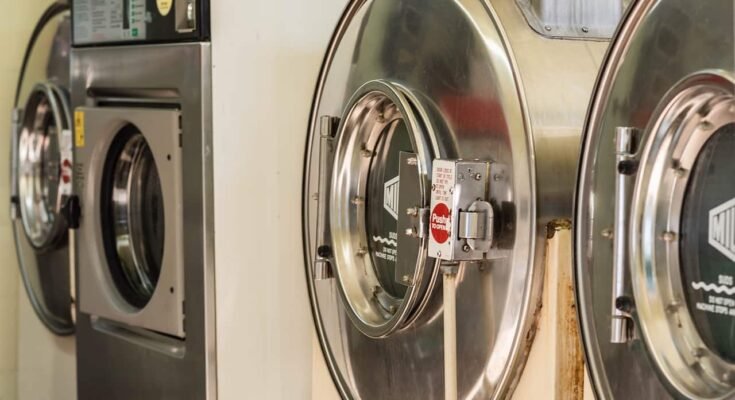The Kenmore Dryer Model 11062812990 is a widely used appliance known for its reliability. However, like any machine, it can encounter issues over time.
To help you understand and resolve these problems, we’ve compiled a thorough guide that covers the most common issues, from the dryer not heating up to strange noises and everything in between.
With the right approach and this guide, you can maintain your Kenmore dryer’s performance and avoid unnecessary repairs.
Common Problems with Kenmore Dryer Model 11062812990
Dryers, including the Kenmore Model 11062812990, can exhibit various performance issues.
1. Dryer Not Heating
One of the most common issues users face is a dryer that does not heat up. Without heat, clothes will remain damp after a cycle, defeating the purpose of the dryer.
Possible Causes and Solutions:The dryer will not heat up if it is damaged or burnt out. You can check this with a multimeter and replace it if necessary.
Defective Thermostat: The high-limit thermostat could malfunction and prematurely cut off the heat. Testing the thermostat with a multimeter and replacing it can resolve this issue.
2. Dryer Not Turning On
If your dryer doesn’t start, it can be frustrating. Fortunately, the cause of this issue is often something simple.
Power Supply Issues: Ensure the dryer is plugged in properly and the circuit breaker hasn’t tripped. A faulty power cord could also be the problem.
Door Switch Malfunction: The dryer won’t start if the door switch isn’t working correctly.
Start Switch Failure: The start switch might be defective. If there is no response when pressing the start button, you may need to replace this component.
3. Clothing Takes Too Long to Dry in the Dryer
If your Kenmore dryer takes unusually long to dry clothes, this might point to an airflow or heating issue.
Possible Causes and Solutions:Clogged Vent: Lint buildup in the dryer vent can restrict airflow, prolonging the drying process. Clean the vent thoroughly to improve airflow.
Faulty Moisture Sensor: Some dryers have moisture sensors to determine when clothes are dry. If this sensor is defective, the dryer may not work efficiently. Replace the sensor if necessary.
Low Heat Setting: Double-check that the heat setting isn’t too low, which can prolong drying times.
4. Dryer Making Loud Noises
Unusual noises coming from the dryer are often a sign of worn-out or broken parts.
Possible Causes and Solutions:
Worn Drum Rollers: The dryer may make a loud thumping or squeaking noises if these wear out. Replacing the rollers should solve this issue.
Damaged Drive Belt: The drive belt helps turn the drum. A broken or worn belt can cause the dryer to make loud sounds.
Worn-Out Motor Bearings: Motor bearings can wear out over time, causing a grinding noise. Replacing the motor is usually the best solution in this case.
5. Dryer Shuts Off Mid-Cycle
If your dryer shuts off during the cycle, it may be due to overheating or electrical issues.
Possible Causes and Solutions:
Overheating: An overheating dryer will automatically shut down to prevent damage. Ensure that the venting system is transparent and the thermostat is working correctly.
Faulty Motor: The dryer’s motor might be overheating or failing, causing it to shut down. If the motor frequently overheats, it might need to be replaced.
Maintenance Tips for Kenmore Dryer Model 11062812990
Regular maintenance is critical to ensuring your dryer runs smoothly for a long time. Here are a few tips to keep your Kenmore dryer in top condition:
Clean the Lint Filter
A clogged filter restricts airflow, which can lead to longer drying times and increase the risk of fire.
Check and Clean the Vent System
At least once a year, check and tidy the dryer vent mechanism. Lint can accumulate in the vent, causing reduced performance and even potential fire hazards.
Inspect the Drum Seal
The drum seal can wear out over time, reducing drying efficiency and noisy operations. Regularly check the seal for wear and tear and replace it if necessary.
Test the Moisture Sensor
If your dryer has a moisture sensor, clean it occasionally with a soft cloth. A dirty sensor can affect drying accuracy and lead to inefficient cycles.
When to Call a Professional
While many dryer issues can be fixed at home with some essential tools, specific problems require professional expertise:
Electrical issues or wiring problems
Refrigerant leaks in gas dryers
Complex motor or control board repairs
If you’re not confident in your ability to troubleshoot or fix the dryer, it’s always better to call a professional technician.
FAQ’s about Kenmore Dryer Model 11062812990
Q1: Why is my Kenmore dryer Model 11062812990 not producing heat?
A: The most common reasons are a faulty heating element, a blown thermal fuse, or a malfunctioning thermostat. Check each component and replace it if necessary.
Q2: How often should I clean the dryer vent?
A: It’s recommended to clean the dryer vent system at least once a year. If you use your dryer frequently, consider cleaning it every six months.
Q3: Why does my dryer make a squeaking noise?
A: Squeaking noises are often caused by worn-out drum rollers or a damaged drive belt. Replacing these parts should eliminate the noise.
Q4: What should I do if my dryer doesn’t turn on?
A: First, check the power supply, including the cord and circuit breaker. Then, inspect the door switch and start the switch for malfunctions.
Q5: How long should a Kenmore dryer Model 11062812990 last?
A: With proper maintenance, a Kenmore dryer can last anywhere from 10 to 15 years.
Conclusion about Kenmore dryer Model 11062812990
The Kenmore Dryer Model 11062812990 is a robust and reliable appliance, but like all machines, it can face operational challenges over time.
This troubleshooting guide is designed to help you identify common issues and implement the right solutions, from heating problems to loud noises.
Regular maintenance, such as cleaning the lint filter and vent system, will ensure that your dryer remains in optimal condition. Should more complex problems arise, don’t hesitate to seek professional assistance.



